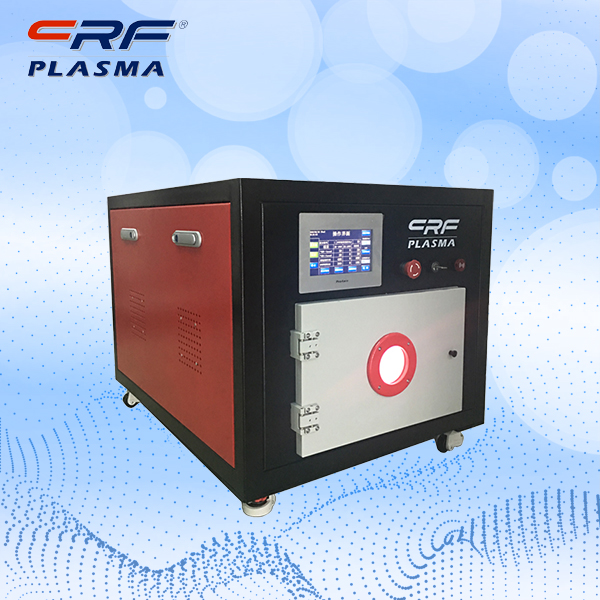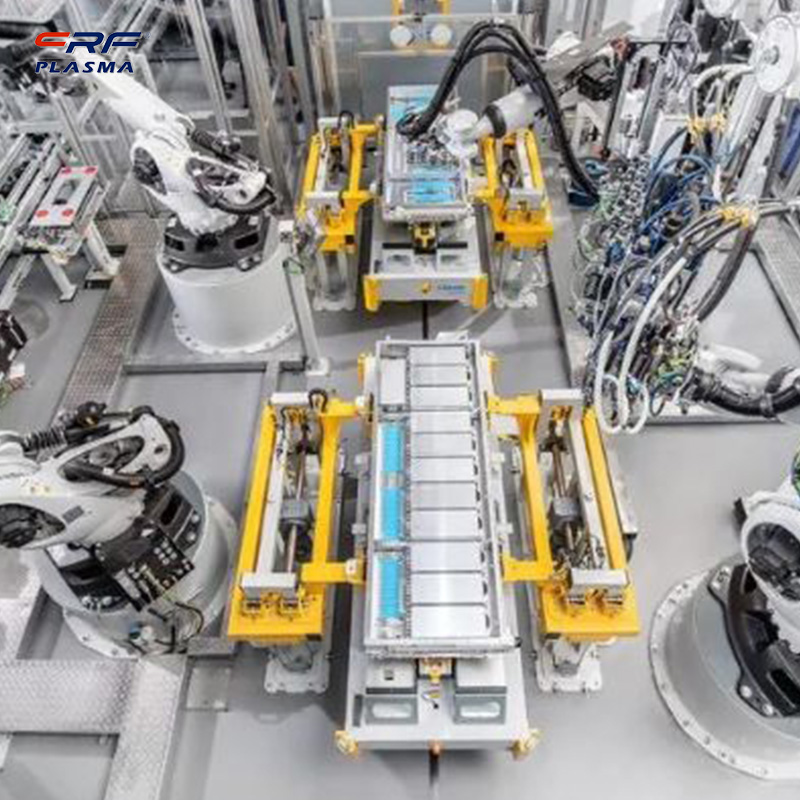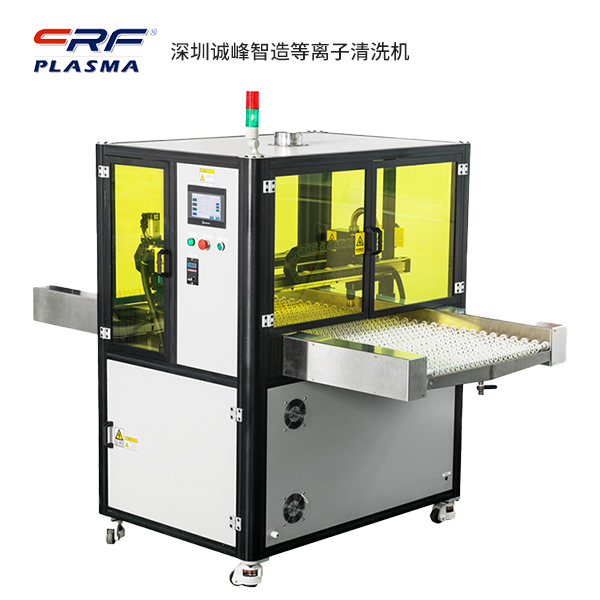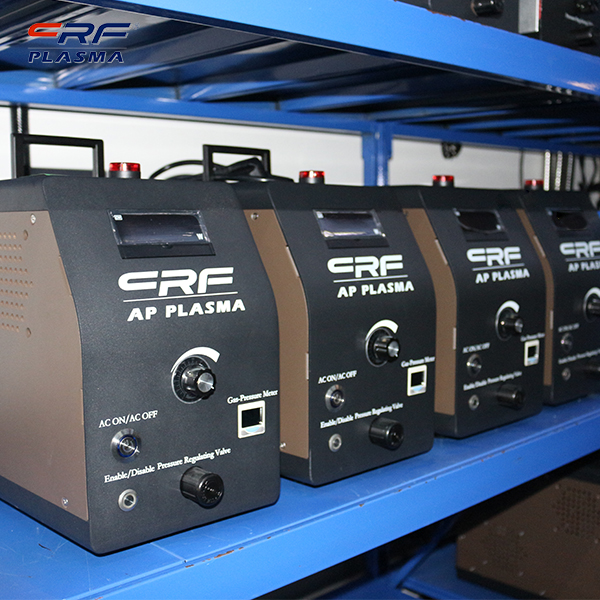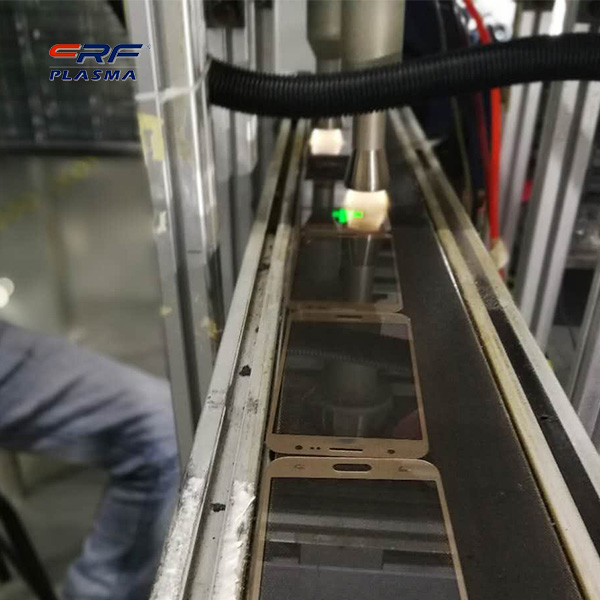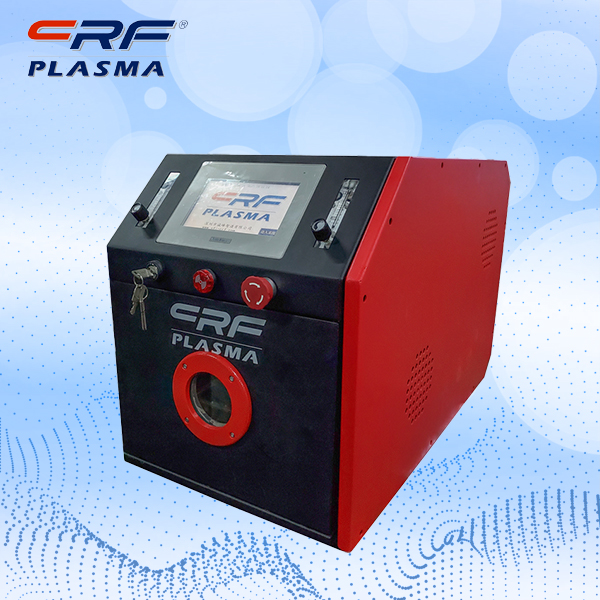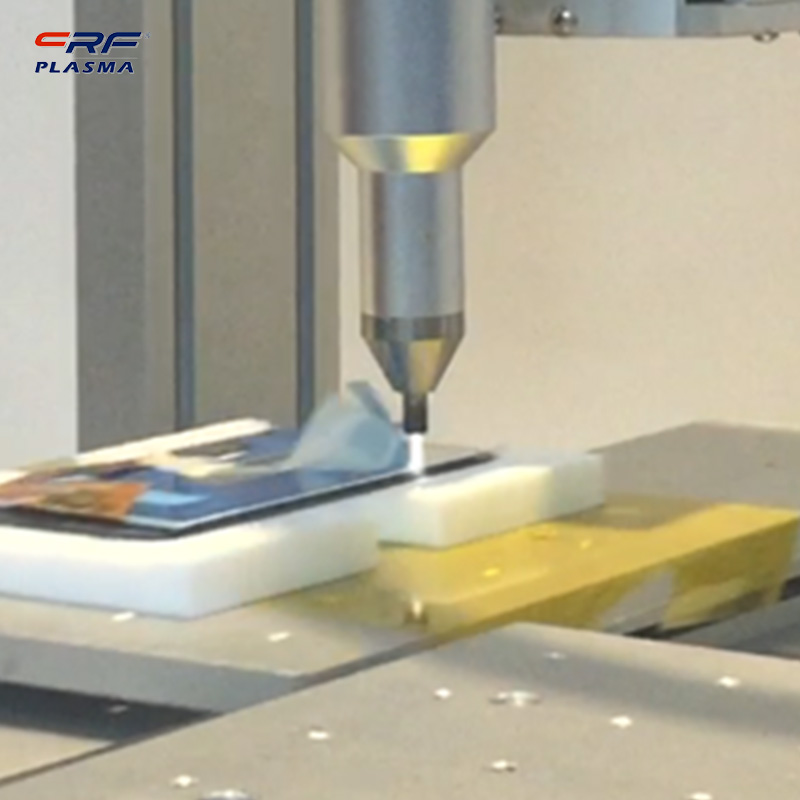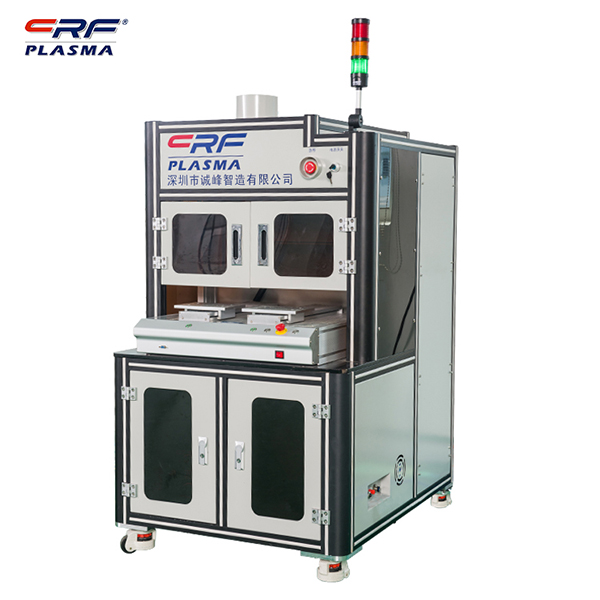
Welcome to Shenzhen Sing Fung Intelligent Manufacturing Co., Ltd.
E-mail:shaobo@sfi-crf.com
Research status of biomedical metal material modification application by low temperature plasma technology
- Categories:Industry News
- Author:Plasma cleaning machine-CRF plasma plasma equipment-plasma surface treatment machine manufacturer-chengfeng intelligent manufacturing
- Origin:
- Time of issue:2022-04-06
- Views:
(Summary description)Research status of biomedical metal material modification application by low temperature plasma technology: Due to the development of basic industries and high-tech products, people's demand for high-quality, high-efficiency surface modification and coating technology is developing in depth. Breakthrough progress has been made in surface modification and coating process simulation and performance prediction. As an important part of the development of new metal biomaterials, low temperature plasma technology surface modification and coating technology has penetrated into traditional industries and high-tech industrial sectors, and further promotes the development of surface functionalized coating technology according to application needs. In the low temperature plasma surface modification technology, it is an important research direction to design the material surface according to the application requirements, tailor the material surface performance parameters to meet the special requirements, and further realize the prediction of the structure and properties of the surface covering layer. Different types of Plasma Chemical Vapor Deposition (PCVD) is a challenging research topic that is being carried out by research institutes and universities. Computer simulation studies on Plasma Chemical Vapor Deposition (PCVD) and other surface modification methods have been carried out abroad. , The PCVD process was simulated, and the macro and micro multi-level models were used to simulate and predict the various properties of the plasma process and coating and the bonding force of the substrate; Simulation allows for better control and optimization of the process. For half a century of the 20th century, the ideas and methods of physics dominated the discovery and preparation of new materials. Since the 1950s, the ideas and methods of molecular biology have been rapidly recognized as the guiding principles for the growth, discovery and crystallization of new materials. & Since most biological reactions occur at the interface and surface of materials, biologists introduce surface science into biology, which plays a decisive role in the development of biomedical materials, biomedical materials and devices have the ability to save human lives, huge The commercial value of it has strongly stimulated a lot of research. Since low-temperature plasma technology has unique advantages and potentials in the growth of biomedical materials and the fabrication of biomedical devices, if the two are organically combined, it is possible to realize the revolutionary development of biomedical technology in the 21st century. In the future, with the development of plasma surface modification technology at home and abroad, combined with the needs and status of biomedical engineering, we will focus on the development of a number of advanced and applicable key technologies for surface functionalization of metal materials, including low-temperature plasma vapor deposition technology and equipment. , Numerical simulation of surface coating process and quality, and research and development of optimal control. What we mean by biomedical materials refers to materials that are compatible with living organisms involved in biomedical research and medical practice, including materials for the manufacture of artificial organs, biosensing materials, external surface materials for in vivo implantation devices, and certain materials. The materials used in some medical devices, the surface reaction of these materials is mainly controlled by the surface chemistry and molecular structure of the materials, which requires biomedical materials not only to have certain physical properties such as strength and elasticity, but also to have a biocompatible surface. nature. It is quite difficult to design a new material with both the required physical properties and the required surface properties. Since the response of organisms to the material surface mainly depends on the chemical properties and molecular structure of the material surface, it is possible to choose existing materials. Surface modification of the material with the required body properties to make it have the required biocompatibility, so as to achieve the above purpose, for example, some macromolecular polymers have similar mechanical properties to human organs, but are not biocompatible Therefore, surface modification is required to fix specific functional groups on the surface to achieve the purpose of being compatible with living organisms. In conclusion, low-temperature plasma technology is being applied by many scientists in the research of surface modification and surface film synthesis of metal biomaterials due to its unique advantages, but most of these studies are still in the development or experimental stage. Low-temperature plasma surface modification technology, with the deepening of plasma theoretical research and the resolution of process problems, will definitely improve the biologi
Research status of biomedical metal material modification application by low temperature plasma technology
(Summary description)Research status of biomedical metal material modification application by low temperature plasma technology:
Due to the development of basic industries and high-tech products, people's demand for high-quality, high-efficiency surface modification and coating technology is developing in depth. Breakthrough progress has been made in surface modification and coating process simulation and performance prediction. As an important part of the development of new metal biomaterials, low temperature plasma technology surface modification and coating technology has penetrated into traditional industries and high-tech industrial sectors, and further promotes the development of surface functionalized coating technology according to application needs. In the low temperature plasma surface modification technology, it is an important research direction to design the material surface according to the application requirements, tailor the material surface performance parameters to meet the special requirements, and further realize the prediction of the structure and properties of the surface covering layer. Different types of Plasma Chemical Vapor Deposition (PCVD) is a challenging research topic that is being carried out by research institutes and universities. Computer simulation studies on Plasma Chemical Vapor Deposition (PCVD) and other surface modification methods have been carried out abroad. , The PCVD process was simulated, and the macro and micro multi-level models were used to simulate and predict the various properties of the plasma process and coating and the bonding force of the substrate; Simulation allows for better control and optimization of the process. For half a century of the 20th century, the ideas and methods of physics dominated the discovery and preparation of new materials. Since the 1950s, the ideas and methods of molecular biology have been rapidly recognized as the guiding principles for the growth, discovery and crystallization of new materials. & Since most biological reactions occur at the interface and surface of materials, biologists introduce surface science into biology, which plays a decisive role in the development of biomedical materials, biomedical materials and devices have the ability to save human lives, huge The commercial value of it has strongly stimulated a lot of research. Since low-temperature plasma technology has unique advantages and potentials in the growth of biomedical materials and the fabrication of biomedical devices, if the two are organically combined, it is possible to realize the revolutionary development of biomedical technology in the 21st century.
In the future, with the development of plasma surface modification technology at home and abroad, combined with the needs and status of biomedical engineering, we will focus on the development of a number of advanced and applicable key technologies for surface functionalization of metal materials, including low-temperature plasma vapor deposition technology and equipment. , Numerical simulation of surface coating process and quality, and research and development of optimal control. What we mean by biomedical materials refers to materials that are compatible with living organisms involved in biomedical research and medical practice, including materials for the manufacture of artificial organs, biosensing materials, external surface materials for in vivo implantation devices, and certain materials. The materials used in some medical devices, the surface reaction of these materials is mainly controlled by the surface chemistry and molecular structure of the materials, which requires biomedical materials not only to have certain physical properties such as strength and elasticity, but also to have a biocompatible surface. nature.
It is quite difficult to design a new material with both the required physical properties and the required surface properties. Since the response of organisms to the material surface mainly depends on the chemical properties and molecular structure of the material surface, it is possible to choose existing materials. Surface modification of the material with the required body properties to make it have the required biocompatibility, so as to achieve the above purpose, for example, some macromolecular polymers have similar mechanical properties to human organs, but are not biocompatible Therefore, surface modification is required to fix specific functional groups on the surface to achieve the purpose of being compatible with living organisms.
In conclusion, low-temperature plasma technology is being applied by many scientists in the research of surface modification and surface film synthesis of metal biomaterials due to its unique advantages, but most of these studies are still in the development or experimental stage. Low-temperature plasma surface modification technology, with the deepening of plasma theoretical research and the resolution of process problems, will definitely improve the biologi
- Categories:Industry News
- Author:Plasma cleaning machine-CRF plasma plasma equipment-plasma surface treatment machine manufacturer-chengfeng intelligent manufacturing
- Origin:
- Time of issue:2022-04-06 17:46
- Views:
Research status of biomedical metal material modification application by low temperature plasma technology:
Due to the development of basic industries and high-tech products, people's demand for high-quality, high-efficiency surface modification and coating technology is developing in depth. Breakthrough progress has been made in surface modification and coating process simulation and performance prediction. As an important part of the development of new metal biomaterials, low temperature plasma technology surface modification and coating technology has penetrated into traditional industries and high-tech industrial sectors, and further promotes the development of surface functionalized coating technology according to application needs. In the low temperature plasma surface modification technology, it is an important research direction to design the material surface according to the application requirements, tailor the material surface performance parameters to meet the special requirements, and further realize the prediction of the structure and properties of the surface covering layer. Different types of Plasma Chemical Vapor Deposition (PCVD) is a challenging research topic that is being carried out by research institutes and universities. Computer simulation studies on Plasma Chemical Vapor Deposition (PCVD) and other surface modification methods have been carried out abroad. , The PCVD process was simulated, and the macro and micro multi-level models were used to simulate and predict the various properties of the plasma process and coating and the bonding force of the substrate; Simulation allows for better control and optimization of the process. For half a century of the 20th century, the ideas and methods of physics dominated the discovery and preparation of new materials. Since the 1950s, the ideas and methods of molecular biology have been rapidly recognized as the guiding principles for the growth, discovery and crystallization of new materials. & Since most biological reactions occur at the interface and surface of materials, biologists introduce surface science into biology, which plays a decisive role in the development of biomedical materials, biomedical materials and devices have the ability to save human lives, huge The commercial value of it has strongly stimulated a lot of research. Since low-temperature plasma technology has unique advantages and potentials in the growth of biomedical materials and the fabrication of biomedical devices, if the two are organically combined, it is possible to realize the revolutionary development of biomedical technology in the 21st century.
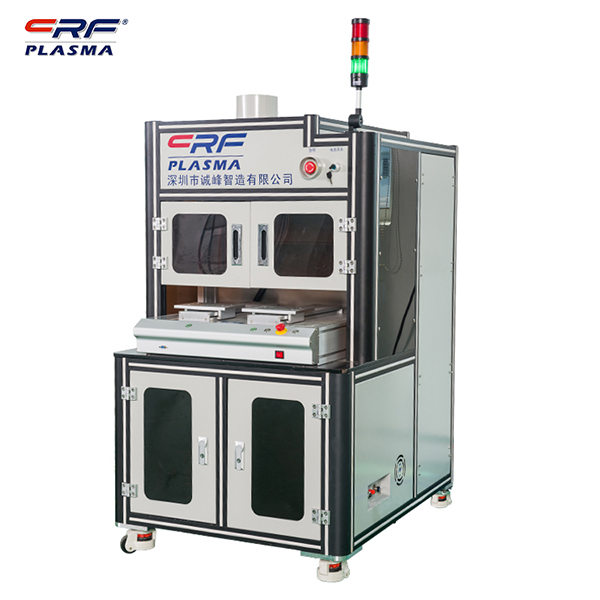 In the future, with the development of plasma surface modification technology at home and abroad, combined with the needs and status of biomedical engineering, we will focus on the development of a number of advanced and applicable key technologies for surface functionalization of metal materials, including low-temperature plasma vapor deposition technology and equipment. , Numerical simulation of surface coating process and quality, and research and development of optimal control. What we mean by biomedical materials refers to materials that are compatible with living organisms involved in biomedical research and medical practice, including materials for the manufacture of artificial organs, biosensing materials, external surface materials for in vivo implantation devices, and certain materials. The materials used in some medical devices, the surface reaction of these materials is mainly controlled by the surface chemistry and molecular structure of the materials, which requires biomedical materials not only to have certain physical properties such as strength and elasticity, but also to have a biocompatible surface. nature.
In the future, with the development of plasma surface modification technology at home and abroad, combined with the needs and status of biomedical engineering, we will focus on the development of a number of advanced and applicable key technologies for surface functionalization of metal materials, including low-temperature plasma vapor deposition technology and equipment. , Numerical simulation of surface coating process and quality, and research and development of optimal control. What we mean by biomedical materials refers to materials that are compatible with living organisms involved in biomedical research and medical practice, including materials for the manufacture of artificial organs, biosensing materials, external surface materials for in vivo implantation devices, and certain materials. The materials used in some medical devices, the surface reaction of these materials is mainly controlled by the surface chemistry and molecular structure of the materials, which requires biomedical materials not only to have certain physical properties such as strength and elasticity, but also to have a biocompatible surface. nature.
It is quite difficult to design a new material with both the required physical properties and the required surface properties. Since the response of organisms to the material surface mainly depends on the chemical properties and molecular structure of the material surface, it is possible to choose existing materials. Surface modification of the material with the required body properties to make it have the required biocompatibility, so as to achieve the above purpose, for example, some macromolecular polymers have similar mechanical properties to human organs, but are not biocompatible Therefore, surface modification is required to fix specific functional groups on the surface to achieve the purpose of being compatible with living organisms.
In conclusion, low-temperature plasma technology is being applied by many scientists in the research of surface modification and surface film synthesis of metal biomaterials due to its unique advantages, but most of these studies are still in the development or experimental stage. Low-temperature plasma surface modification technology, with the deepening of plasma theoretical research and the resolution of process problems, will definitely improve the biological properties of metal materials, reduce toxicity, and play an active role in medicine. In addition, selectively modifying the surface of materials to make them have specific functions requires changing and controlling the functional groups on the surface. We call this method of surface modification of existing materials to achieve corresponding biocompatibility. For interface design, the interface design of different biomaterials has different challenges, which come from different surface functions and recognized organisms, and it is necessary to choose the appropriate functional groups according to the needs, but also choose the appropriate technology to integrate these. Functional groups are introduced into the surface, and for many existing materials, plasma polymerization and plasma polymerization grafting are a very effective and economical surface modification technology, which is gaining more and more attention in the biotechnology and engineering community, The purpose of changing the surface can be achieved by selectively changing the functional groups of the surface.
Scan the QR code to read on your phone

TEL:0755-3367 3020 / 0755-3367 3019

E-mail:sales-sfi@sfi-crf.com

ADD:Mabao Industrial Zone, Huangpu, Baoan District, Shenzhen




